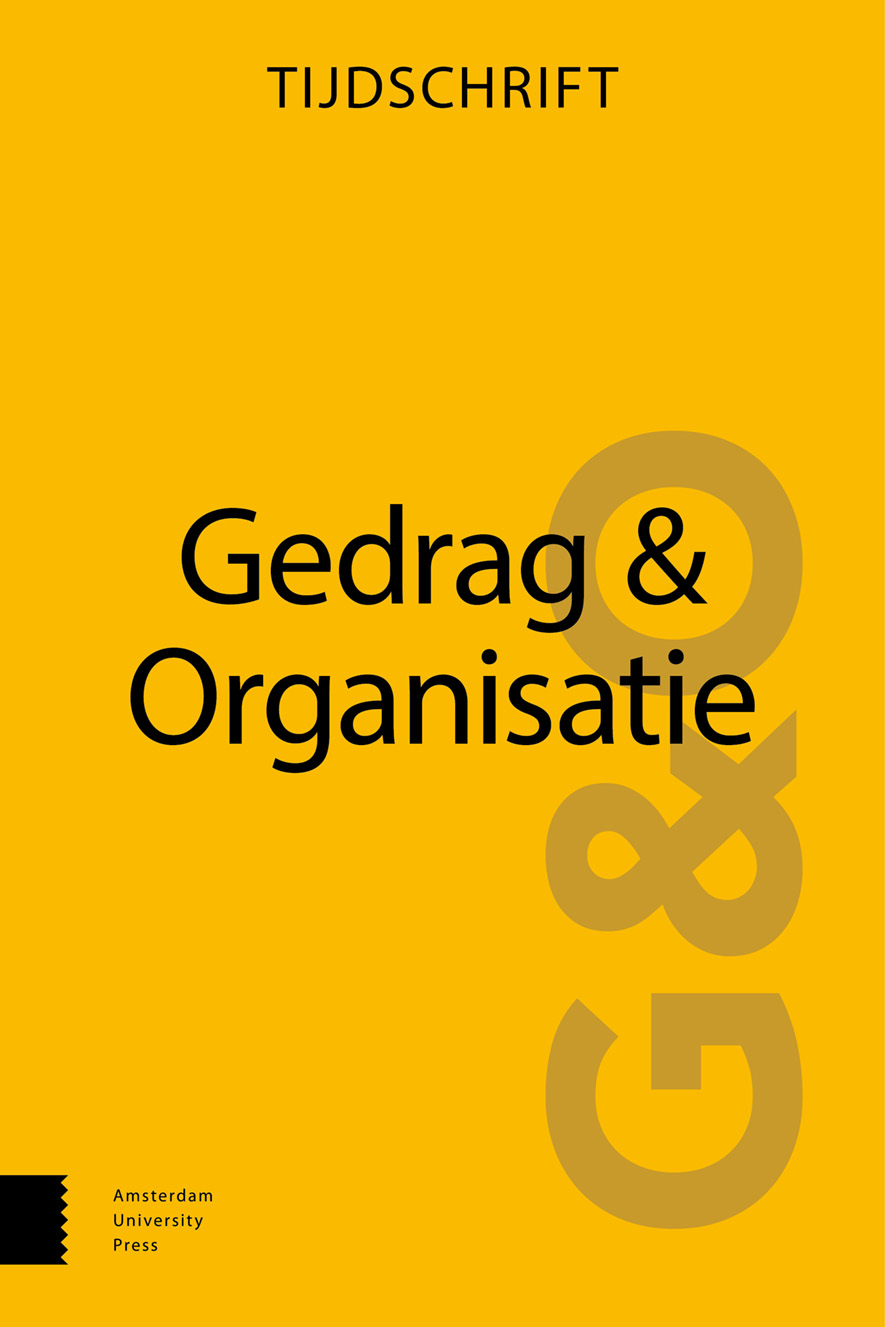- Home
- A-Z Publications
- Gedrag & Organisatie
- Previous Issues
- Volume 24, Issue 3, 2011
Gedrag & Organisatie - Volume 24, Issue 3, 2011
Volume 24, Issue 3, 2011
Language:
Dutch
-
-
oa Psychisch welzijn tijdens werkloosheid: de rol van persoonlijkheid en perceptie van tijdsstructuur
More LessAuthors: Hanne Lootens & Greet Van HoyePsychological well-being during unemployment: the role of personality and perception of time structure Psychological well-being during unemployment: the role of personality and perception of time structure Gedrag & Organisatie, volume 24, September 2011, nr. 3, pp. 207-232.Unemployed people report lower levels of psychological well-being than employed individuals. However, when unemployed individu Read More
-
-
-
oa Aan welke activiteiten van leidinggevenden hebben medewerkers vooral behoefte? Nieuwe onderzoeksresultaten en suggesties
More LessAuthors: J. Wim M. van Breukelen & Reinout E. de VriesWhat leadership activities do employees need from their supervisor? New research findings and suggestions What leadership activities do employees need from their supervisor? New research findings and suggestions Gedrag & Organisatie, volume 24, nr. 3, pp. 233-256.This article focuses on employees’ expectations and preferences about the behavior and activities of their direct supervisors. A sample of 304 empl Read More
-
-
-
oa De webcamtest als voorspeller van professioneel gedrag
More LessAuthors: Marit R.E. Op de Beek, Janneke K. Oostrom & Marise Ph. BornThe webcam test as a predictor of professional behavior The webcam test as a predictor of professional behavior Gedrag & Organisatie, volume 24, September 2011, nr 3, pp. 257-285.The webcam test is a new video assessment designed to measure social competencies. The main purpose of this study was to investigate the criterion-related validity of the webcam test and its incremental validity over and above a cognitive a Read More
-
-
-
oa Flexicurity gemeten. Een vragenlijst over flexibiliteit en zekerheid voor organisatie en werknemer
More LessAuthors: René Schalk & Sabine RaederFlexicurity assessed. A questionnaire for organizational and employee flexibility and security Flexicurity assessed. A questionnaire for organizational and employee flexibility and security Gedrag & Organisatie, volume 24, September 2011, nr. 3, pp. 286-303.Flexicurity, the balance between security and flexibility, is an important theme in Human Resource Management in Europe for employers as well as employees (Freese, P Read More
-
-
-
oa Moeilijke beslissingen
More LessDifficult decisions Difficult decisions Gedrag & Organisatie, volume 24, September 2011, nr. 3, pp. 304-315.In the scientific literature, there is no consensus about the causes of (subjectively experienced) decision difficulty. It is important, however, to know more about this, because more resources are invested in difficult rather than easy decisions, because difficult decisions are associated with stress, and because decision Read More
-
-
-
oa Mythes en Hypes in de A&O psychologie
More LessGedrag & Organisatie start een nieuwe reeks, waarvoor we auteurs uitnodigen een bijdrage te schrijven. Deze reeks gaat over mythes en hypes in de A&O psychologie.Volgens Van Dale is een mythe een gangbare, als onaantastbaar beschouwde, maar ongegronde opvatting. Binnen de A&O psychologie kan dit bijvoorbeeld gaan over een populaire (maar gefalsificeerde) theorie, een populair (maar invalide) meetinstrument of Read More
-
Volumes & issues
-
Volume 38 (2025)
-
Volume 37 (2024)
-
Volume 36 (2023)
-
Volume 35 (2022)
-
Volume 34 (2021)
-
Volume 33 (2020)
-
Volume 32 (2019)
-
Volume 31 (2018)
-
Volume 30 (2017)
-
Volume 29 (2016)
-
Volume 28 (2015)
-
Volume 27 (2014)
-
Volume 26 (2013)
-
Volume 25 (2012)
-
Volume 24 (2011)
-
Volume 23 (2010)
-
Volume 22 (2009)
-
Volume 21 (2008)
-
Volume 20 (2007)
-
Volume 19 (2006)
-
Volume 18 (2005)
-
Volume 17 (2004)
Most Read This Month
Article
content/journals/09215077
Journal
10
5
false
en


